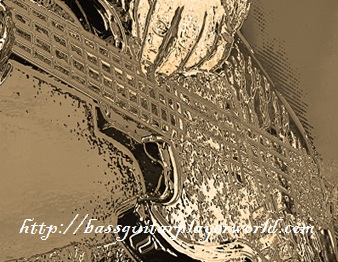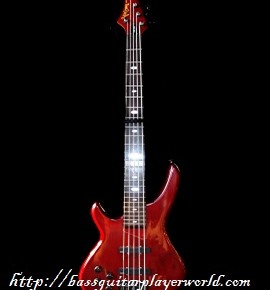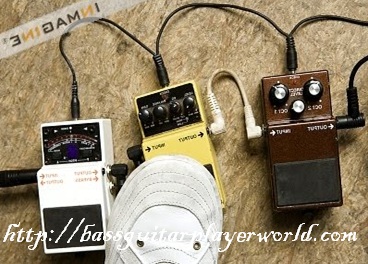Alternate Tunings – A List And Guide of Possibilities
 Standard tuning is great. The only thing is, just because it’s great, doesn’t mean there are no alternatives. In fact, tuning experimentation can lead to some pretty cool sounds and ideas. More than that, in some cases it can lead to larger chord shapes and different arpeggios as well.
Standard tuning is great. The only thing is, just because it’s great, doesn’t mean there are no alternatives. In fact, tuning experimentation can lead to some pretty cool sounds and ideas. More than that, in some cases it can lead to larger chord shapes and different arpeggios as well.
In this article, we’ll discuss some of the most common, and popular, alternate tunings for the bass guitar. Remember that, no matter how expensive your bass guitar, changing tuning will require two things; lowered or raised action, and possible truss rod adjustments.
Three if you count re-intonating your bass guitar.
The reason for all of these adjustments is simple; changing tuning changes the amount of tension put on your bass guitar’s neck. This means that your strings will either become slacker if detuned, or overly tight of tuned up. Although we won’t be going any higher tuning today, you should understand that it is possible, and bassists toy with it all the time.
The change in tension and the added (or reduced) stress exerted on your bass guitar’s neck can cause the bass neck to bow. This will simply mean that the wood bends a bit under the tension of the strings. It is nothing to panic about; it happens all the time to millions of guitarists. Look at our articles on bowed necks and truss rod adjustments for information on how to fix this small issue.
The final piece before we get into the tuning is the importance of intonation; intonation is the evenness of notes though out the neck. If you intonation is off, your notes will be either too sharp or too flat at certain places on the neck. This can cause some awful sounds and discordance.
Now, Onto the Tunings
 First off, the basic drop D tuning. This tuning is D, A, D, G for a four stringed bass. The benefit is that you get the lower D without losing any higher notes. The downside is that the tuning isn’t very low.
First off, the basic drop D tuning. This tuning is D, A, D, G for a four stringed bass. The benefit is that you get the lower D without losing any higher notes. The downside is that the tuning isn’t very low.
Next up is D standard. This tuning on a four strings bass guitar is D, G, C, F. This tuning is a lot more aggressive than dropped D simple because the rest of the notes are dropped a step, giving it a deeper tone through the neck. The downside is that you lose a full note on the higher end.
Next, is dropped C. This tuning, on a four stringer, is C, G, C, F. Not only is this tuning lower and heavier, but it can also be used to create larger chord shapes, giving harmonies more depth. Again, the downside is that you lose a full note.
Next up is C tuned to thirds, which on a bass guitar is C, G, C, G. This tuning is great for experimentation with chord shapes, and makes larger ones much simpler to fret. The downside is that you will have to get used to a different style of tuning, as most bassists are well acquainted with the fourths style of tuning.
Building Upon The Stuff You Learnt Today
These are just a few possible tunings; the key to finding a great tuning is to use your knowledge of musical intervals and put it to practical use through experimentation. You never know what you may find!
Check Out The Perfect Learning Tool For Bassists of All Skill Levels
JamPlay offers the best online bass instructions on the Internet. With hundreds of professionally recorded lessons, Jamplay is the ideal place to learn the basics and improve your bass playing skills. With great teachers and carefully planned lesson structures, I guarantee you will be able to take your bass playing to a higher level in no time.
Related Articles
Comments are closed.





